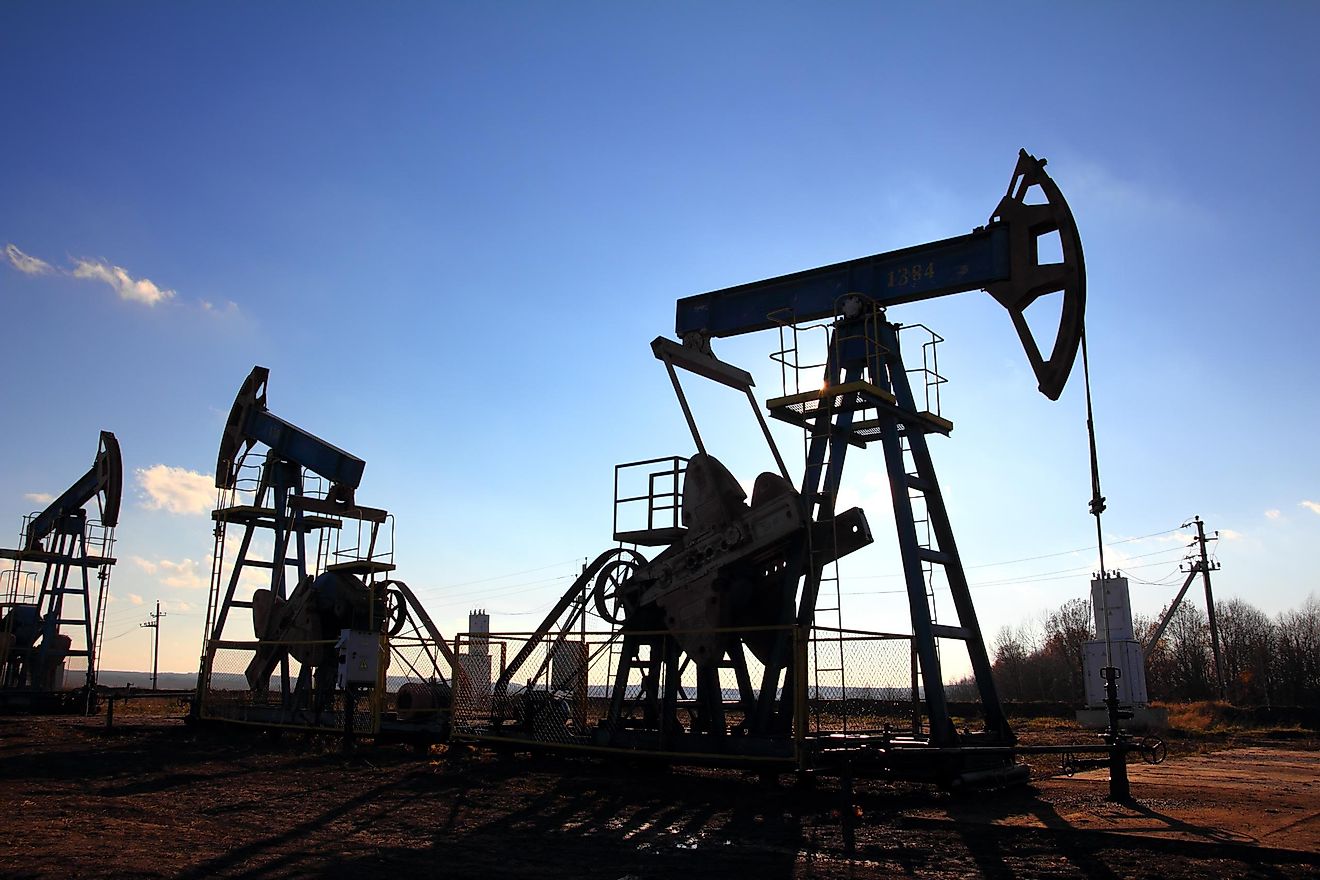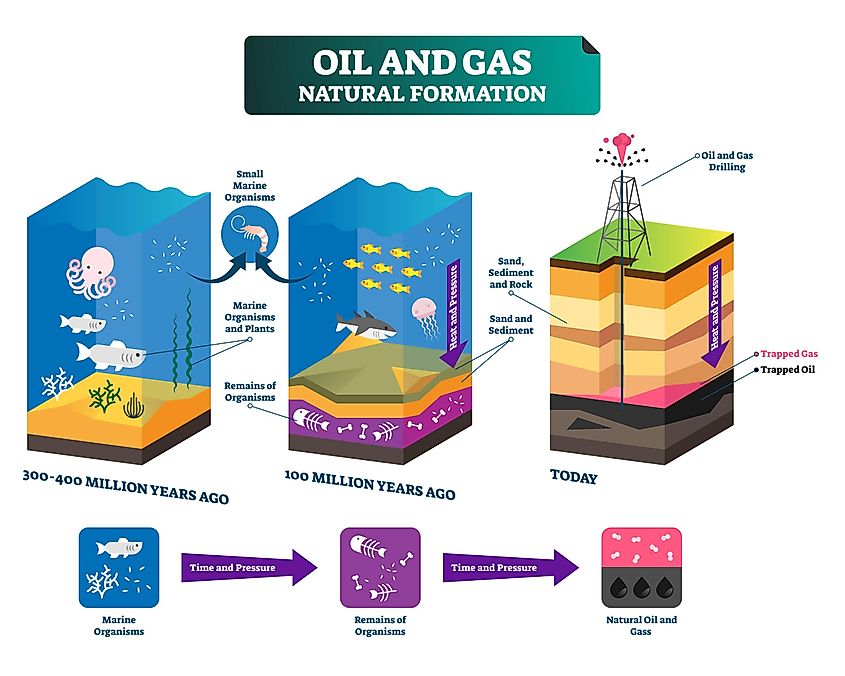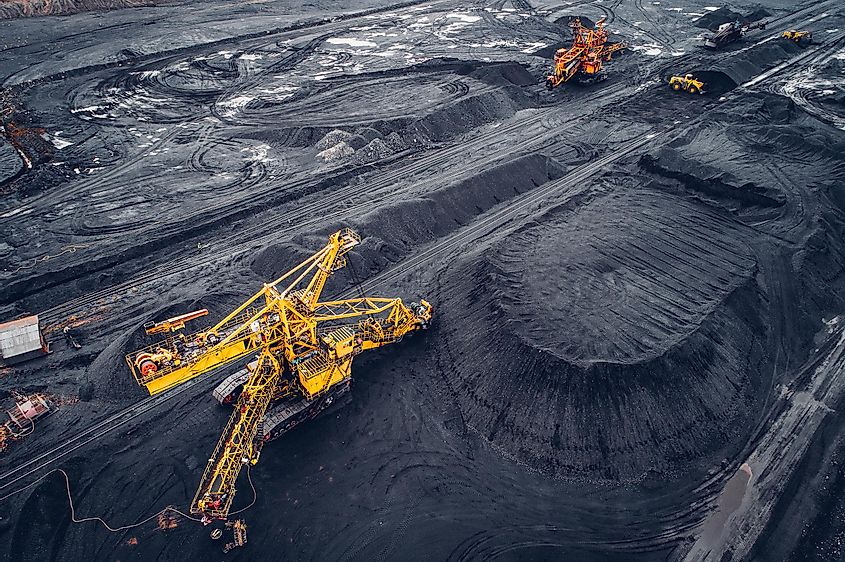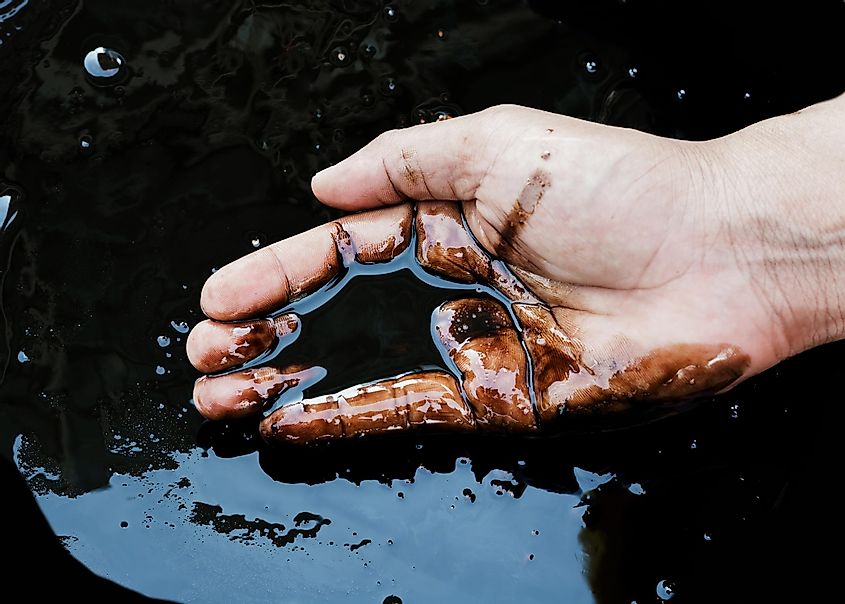Fossil Fuels

- There are three types of fossil fuels: coal, natural gas and crude oil
- Fossil fuels are made up of decayed organic matter that has been trapped within the Earth's surface and compressed and heated over millions of years.
- Fossil fuels primarily consist of carbon and hydrogen, which makes them great sources of energy when they are burned.
Fossil fuels are natural resources that are buried deep beneath the Earth’s surface. They are created when decomposed plants and organisms undergo extreme heat and pressure within the Earth’s crust. As the matter is trapped and compressed over millions of years, the chemicals and bonds within the organisms begin to break down and transform into various natural fuels and oils. Because they take so long to form, they are often referred to as non-renewable resources.
The fuel itself is formed when organic matter, be it plants or animals, is trapped and then decomposes. During decomposition, bacteria will break down an organism, which releases carbon dioxide back into the atmosphere. In the case of fossil fuels, the organism is trapped under sediment and rock. This tends to happen in sandy or muddy areas where a body becomes covered before it can decompose naturally. Then, once trapped, the sand, silt, or sediment becomes compacted and hardened over time and under extreme heat and pressure. This fossilizing process takes many millions of years.
Common fossil fuels include oil, coal, and natural gas. Humans use these fuels as various sources of energy, and fossil fuels make up more than three-quarters of the world’s energy sources.
How Do Fossil Fuels Form?

Fossil fuels are carbon-rich compounds made primarily from carbon and hydrogen. Each compound, be it coal, oil, or natural gas, is a different combination of carbon, hydrogen, and other compounds. Each is formed in slightly different ways, or from different organic materials. Different temperatures and levels of pressure will also have an effect on the resulting fuel, and these fuels will transition from one to the other if left to time. For example, any organic matter as it breaks down becomes a thick, viscous substance referred to as kerogen. Kerogen can be used as a fuel source directly, or if left to further compressed over time, becomes crude oil.
The organic material can also help dictate the end result. Phytoplankton and zooplankton, which are both very small marine crustaceans, created petroleum and natural gasses as they decomposed and were compressed over millions of years. Decomposing plants generally turn into coal.
Types Of Fossil Fuels
There are three main types of fossil fuels: coal, oil, and natural gas.
Coal

Coal is one of the rudimentary fuel sources and exists in a solid form. It is a sedimentary rock, which is black or dark brown in color, and usually quite hard or dry and crumbly. Coal comes from decomposed vegetation, whether marine, such as algae, or other vegetation that became trapped under mud, silt, or sand. Over time, this organic matter was further buried by additional layers of sediment. Then, the increased pressure from the weighted sediments above it began to compress the plant material, eventually transforming it into a solid state.
Coal is pulled from the Earth by way of mining. Reserves of coal, often called coal seams or beds, can measure some 30 m (90 ft) deep and stretch 1,500 km (920 miles). The Earth’s largest coal reserves are the United States, China, Russia, Australia, and India. Overall, coal makes up approximately one-third of the energy sources used around the world. Energy is extracted by coal through the process of combustion (burning).
Along with providing energy, coal releases carbon dioxide when it is burned. These carbon dioxide emissions account for almost half of the global total of carbon-based air pollutants. These emissions are what are driving climate change as well as negative health and environmental impacts. Because of this, coal use has decreased in some countries, but it still remains a primary source of fuel in many places around the world.
Natural Gas

Venturing deeper within the Earth’s crust, past the coal mines, lie natural gas reserves. Natural gas is an odorless gas mainly made up of methane. Gas pockets form in a very similar way to coal or oil and consist of decayed organic matter that was compressed and heated over millions of years. Natural gas is more difficult to extract from the Earth than coal is, partly due to its gaseous form, but also because it is so deep within the crust.
Advancements in extraction technologies have meant that natural gas has become more readily available. A technique called fracking, which involves hydraulic drilling, has allowed natural gas to be extracted more easily and at lower costs, so more and more natural gas can be pulled from the Earth’s crust than ever before. Because of this, natural gas is now the most commonly used fuel for producing electricity in the United States.
Additional reserves of natural gas exist below the ocean bed and below frozen ice caps which have yet to be tapped due to the increased difficulty of extraction. Natural gas is actually considered "cleaner" than both coal and crude oil, as it produces less carbon emissions. However, it is still far from a green source of energy and constitutes roughly one-fifth of the world’s emissions, purely from direct use. Additional emissions are released into the environment from industrial processes used to extract, transport, and refine the gas.
Oil

Crude oil is found even deeper within the Earth’s crust and is primarily made up of carbon and hydrogen. It is usually a dark, thick, and sticky liquid that is buried deep below the surface of the Earth. Oil, like the other fossil fuels mentioned, was formed over many millions of years from compressed plant and animal life. Crude oil was once mainly algae and plankton, which was trapped and compressed for roughly 60 to 250 million years.
Oil is pulled from the Earth’s crust by way of wells and is then refined into various oil products such as petroleum, diesel, and oil used for heating. Saudia Arabia, the United States and Russia and the largest oil-producing countries in the world, and account for 40% of the supply on Earth. It is used in a variety of ways, from the production of plastics to vehicle fuel, and drives much of human activity. Almost one-third of the carbon emissions in the world come from the burning and use of crude oil. This means that oil is a major contributor to air pollution and global warming. Additionally, the oil industry can have extremely dire consequences on the environment due to the potential for oil spills. Oil spills in oceans and seas, but also any spillage that occurs during transport on land or through pipelines, can devastate ecosystems or contaminate huge marine areas.











